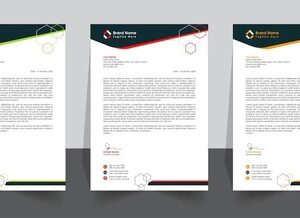NFTs, or non-fungible tokens, have taken the digital world by storm. From digital art and music to virtual real estate and gaming items, NFTs are changing the way we think about ownership and value. At the centre of this revolution are NFT marketplaces platforms where users can buy, sell, and trade NFTs.
In this guide, we’ll walk you through everything you need to know about NFT marketplace development, from what it means to how you can build one. Whether you’re a business owner, entrepreneur, or tech enthusiast, this guide will help you understand the basics in a simple and clear way.
What Is an NFT Marketplace Development?
An NFT marketplace development is a digital platform where users can create, list, buy, sell, or trade NFTs. These platforms are built on blockchain technology, which ensures that every transaction is secure and transparent.
Popular examples of NFT marketplaces include Open Sea, Raible, Foundation, and Super Rare. These platforms allow creators to monetize their work and give buyers full ownership over their purchased digital assets.
Why Build an NFT Marketplace?
There are several reasons why businesses and startups are investing in NFT marketplace development:
- Rising Popularity of NFTs: NFTs are no longer just a trend they are becoming a key part of the digital economy.
- New Revenue Streams: NFT marketplaces make money through listing fees, transaction fees, and premium services.
- Control and Customization: Owning your marketplace means you can choose how it works, what it offers, and how it looks.
- Support for Creators: These platforms empower artists and creators to directly connect with their audiences.
Key Components of an NFT Marketplace
Before diving into development, it’s important to understand the key components that make up an NFT marketplace:
- User Interface (UI)
The UI should be clean, responsive, and easy to use. It’s the first thing users see when they visit your marketplace. - User Accounts and Wallet Integration
Users must be able to create accounts and connect their crypto wallets (like MetaMask) to manage funds and NFTs. - Search and Filter Options
Help users easily find the NFTs they are looking for with search bars, categories, tags, and filters. - Minting Feature
This allows users to create (or “mint”) new NFTs directly on your platform. - Listing and Bidding System
Sellers should be able to list NFTs for sale at a fixed price or through an auction. - Smart Contracts
These are self-executing codes that handle transactions, royalty payments, and ownership verification on the blockchain. - Admin Panel
A backend system for managing users, content, payments, and platform settings. - Security Measures
Blockchain is secure, but your platform still needs protection against scams, data breaches, and fraud.
Steps to Develop an NFT Marketplace
Here’s a simple step-by-step process for developing your own NFT marketplace:
1. Choose Your Niche
Decide what kind of NFTs your platform will support. It could be art, music, gaming assets, sports collectibles, or a mix. Focusing on a niche can help you target specific user groups.
2. Select the Right Blockchain
Your choice of blockchain affects transaction speed, cost, and security. Popular options include:
- Ethereum – Most widely used, but has high gas fees.
- Polygon – Low fees and faster transactions.
- Solana – High-speed and scalable.
- Binance Smart Chain (BSC) – Affordable and popular for new projects.
3. Design the Platform
Work with UI/UX designers to create a user-friendly layout. The design should look professional and feel intuitive for users of all experience levels.
4. Develop Smart Contracts
Smart contracts are the heart of your platform. They handle NFT creation, buying, selling, and royalties. Ensure they are tested for security and functionality.
5. Set Up Wallet Integration
Integrate crypto wallets like MetaMask, Coinbase Wallet, or Trust Wallet so users can store NFTs and cryptocurrencies safely.
6. Build the Frontend and Backend
- Frontend: The part users interact with (built using React, Vue, etc.)
- Backend: Manages database, user accounts, and admin operations (can use Node.js, MongoDB, etc.)
7. Add Essential Features
Make sure your platform includes:
- NFT minting tools
- Advanced search and filters
- Auction and fixed-price listings
- Notification system
- Dashboard for creators and buyers
8. Test Thoroughly
Conduct multiple rounds of testing, including:
- Functionality testing
- Security testing
- Performance testing
Fix bugs and ensure smooth performance across all devices.
9. Launch and Promote
Once everything works well, launch your platform. Use social media, influencers, and PR campaigns to attract users and creators.
10. Maintain and Upgrade
Keep your platform updated with new features, performance improvements, and security patches. Listen to user feedback to stay relevant.
Must-Have Features in Your NFT Marketplace
To ensure your marketplace stands out, consider adding these user-friendly features:
- Multi-Chain Support – Let users choose their preferred blockchain.
- Royalties for Creators – Automatic royalty payments on resales.
- Analytics Dashboard – Show stats like views, sales, and earnings.
- KYC/AML Compliance – For added user trust and legal compliance.
- Mobile Optimization – Many users browse on phones, so your platform must be mobile-friendly.
Benefits of NFT Marketplace Development
Here are some key benefits of launching your own NFT marketplace:
- Revenue Generation: Earn from transaction fees, premium listings, and creator tools.
- Global Reach: Attract users from all over the world.
- Support for Creators: Offer a platform where artists can earn directly from their work.
- Security and Transparency: Thanks to blockchain technology, transactions are verifiable and tamper-proof.
- Scalability: With the right tech stack, your platform can grow quickly as user demand increases.
Final Thoughts
NFTs are changing the way we think about digital ownership, and NFT marketplaces are at the heart of this change. Whether you’re an entrepreneur, artist, or tech innovator, building an NFT marketplace opens up exciting new opportunities.
By following this simple guide, you can get a clear idea of what NFT marketplace development involves from planning and design to launch and growth. Whether you build from scratch or choose a white label app marketplace, now is a great time to enter the NFT space.



